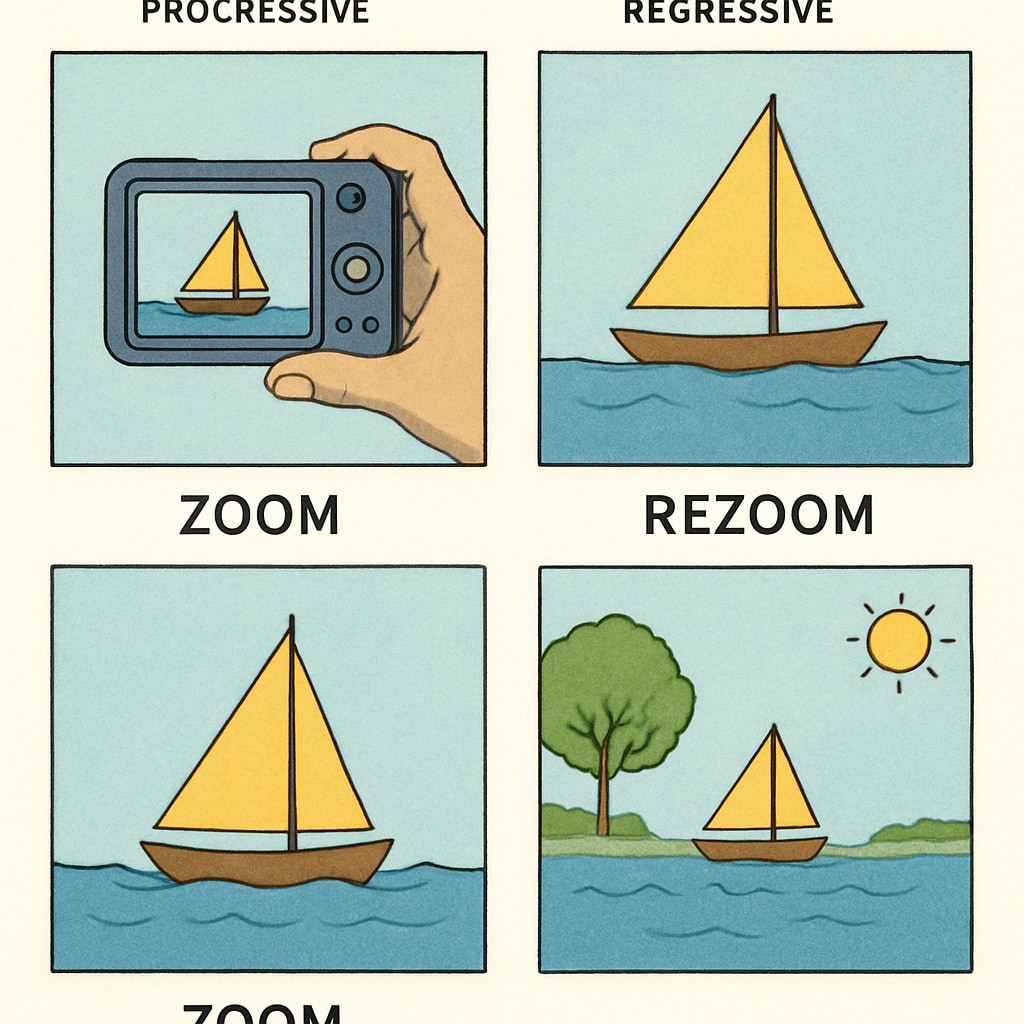Engaging students in activities like Zoom and ReZoom teaching activities can significantly enhance their visual thinking and logical reasoning skills. These dynamic exercises challenge participants to piece together fragmented visuals into coherent narratives, fostering creativity, teamwork, and problem-solving. Whether you’re an educator seeking to implement this innovative teaching method or a facilitator searching for strategies to uncover answers, this guide provides a comprehensive approach to mastering Zoom and ReZoom activities.
Understanding the Basics of Zoom and ReZoom Activities
Zoom and ReZoom are visual storytelling exercises designed to improve students’ spatial awareness and logical deduction. In Zoom, participants unravel a sequence of images that gradually expand from a microscopic perspective to a broader view. Conversely, ReZoom reverses this process, narrowing the focus from a wide-angle perspective. These activities are often implemented using image cards or books featuring sequential illustrations.
Key objectives of these activities include:
- Encouraging creative thinking through visual problem-solving.
- Promoting collaboration and communication in group settings.
- Enhancing analytical skills by interpreting and connecting visual cues.
For more background on visual thinking strategies, explore visual thinking on Wikipedia.

How to Implement Zoom and ReZoom Activities in the Classroom
To successfully incorporate these activities into your teaching plan, follow these implementation steps:
- Prepare the materials: Gather image cards or books specifically designed for Zoom and ReZoom activities. Ensure the visuals are age-appropriate and engaging for your students.
- Divide students into groups: Encourage teamwork by assigning students to small groups. This setup allows for collaborative problem-solving and communication.
- Explain the rules: Provide clear instructions on how to sequence the images logically. Highlight the importance of paying attention to visual details and patterns.
- Facilitate the activity: Act as a guide to support students without revealing answers. Encourage them to discuss their reasoning and explore different perspectives.
- Reflect and discuss: After completing the activity, lead a discussion to review the process and outcomes. Ask students to share insights on their strategies and observations.
In addition, educators can explore resources like visual perception on Britannica for deeper insights into how the brain processes visual information.

Strategies to Find Answers in Zoom and ReZoom Activities
While Zoom and ReZoom activities are designed to be open-ended, educators can employ specific methods to guide students toward solutions:
- Focus on details: Encourage students to examine subtle visual elements, such as colors, shapes, and patterns, to make connections between images.
- Identify themes: Ask students to consider overarching themes or narratives that could link the images together.
- Collaborative deduction: Promote group discussion and brainstorming to combine different perspectives and arrive at a consensus.
- Trial and error: Allow students to experiment with sequencing options and reflect on their reasoning during the process.
By fostering a supportive environment where mistakes are part of learning, educators can help students develop confidence and persistence in problem-solving.
Conclusion: Unlocking Potential with Zoom and ReZoom Activities
Zoom and ReZoom teaching activities offer a unique and engaging way to enhance students’ visual thinking and logical reasoning capabilities. By following the implementation guide and adopting effective answer-finding strategies, educators can create an enriching learning experience that inspires creativity and teamwork. These activities not only provide valuable cognitive development but also encourage meaningful collaboration among students. Start incorporating Zoom and ReZoom into your curriculum today and witness the transformative impact on your classroom dynamics.
Readability guidance: Use concise paragraphs to maintain clarity. Include lists and logical flow to simplify complex ideas. Distribute keywords naturally and avoid excessive repetition.


